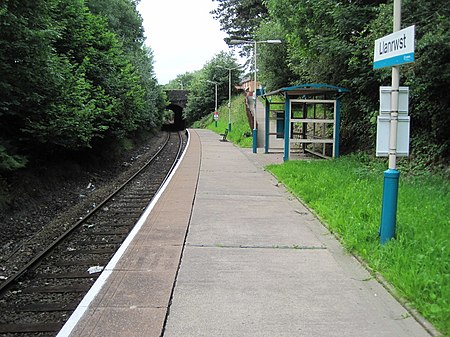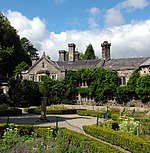Llanrwst railway station
1989 establishments in the United KingdomDfT Category F2 stationsLlanrwstPages with no open date in Infobox stationRailway stations in Conwy County Borough ... and 5 more
Railway stations in Great Britain opened in 1989Railway stations opened by British RailRailway stations served by Transport for Wales RailUse British English from January 2017Wales railway station stubs

Llanrwst railway station is in Denbigh Street near the centre of the market town of Llanrwst, Wales, and close to the local bus termini in Watling Street. It is situated on the Conwy Valley Line from Llandudno Junction to Blaenau Ffestiniog 12 miles (19 km) south of the former and was opened by British Rail in 1989. The town's original station (opened in 1863) 1⁄2 mile (0.80 km) to the north is now called North Llanrwst.
Excerpt from the Wikipedia article Llanrwst railway station (License: CC BY-SA 3.0, Authors, Images).Llanrwst railway station
Watling Street,
Geographical coordinates (GPS) Address Nearby Places Show on map
Geographical coordinates (GPS)
| Latitude | Longitude |
|---|---|
| N 53.139 ° | E -3.795 ° |
Address
Ysgol Bro Gwydir
Watling Street
LL26 0EY , Llanrwst
Wales, United Kingdom
Open on Google Maps







